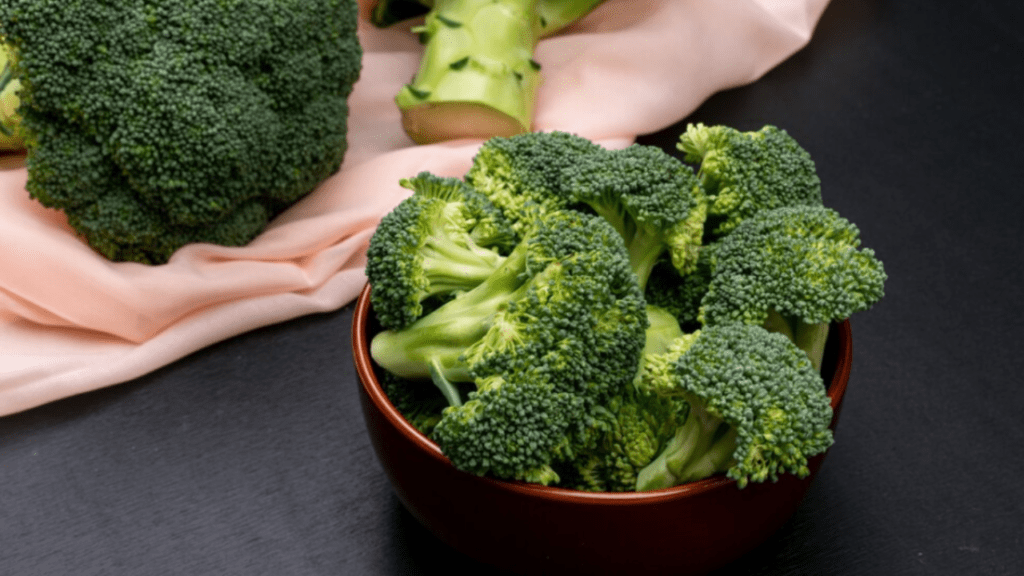
Broccoli Flowering Explained: Everything You Need to Know
Broccoli flowered is a natural process that occurs in broccoli plants, but it can be confusing for many gardeners. In this article, we’ll explore everything you need to know about broccoli flowering, including what causes it, how to manage it, and what it means for the health of your plants. Whether you’re an experienced gardener or just starting out, this guide will provide you with all the information you need to understand and navigate broccoli flowering in your garden.
Broccoli flowering is a natural process that occurs in broccoli plants as they reach maturity. When broccoli plants begin to produce small, yellow flowers, it is a sign that the plant is transitioning from the vegetative stage to the reproductive stage. This process can be confusing for many gardeners, especially those who are unfamiliar with the growth patterns of broccoli.
broccoli flowered is caused by a combination of environmental factors, such as temperature fluctuations and day length, as well as genetic factors. It is important to manage broccoli flowering in order to ensure the health and productivity of the plant. For example, excessive heat or stress can cause broccoli plants to bolt, or prematurely flower, which can affect the quality of the broccoli heads.
To manage broccoli flowering, it is important to monitor the growing conditions and provide the plant with adequate water, nutrients, and sunlight. Additionally, harvesting the broccoli heads before they begin to flower can help to prolong the plant’s productivity and prevent bitterness in the heads.
In summary, understanding broccoli flowering is essential for successful broccoli gardening. By learning about the causes and management of broccoli flowering, gardeners can ensure the health and productivity of their broccoli plants.
Table of Contents
ToggleThe Growth Cycle of Broccoli
Overview of the broccoli plant’s life stages.
Broccoli plants go through several stages in their life cycle. It all begins with the seedling stage, where the plant starts to grow from a seed and develop its first leaves. As the plant grows, it enters the vegetative stage, where it focuses on building a strong stem and leaves. During this stage, it is important to provide the plant with plenty of water and nutrients to support its growth. Once the plant reaches maturity, it enters the reproductive stage, where it begins to form flower buds that will eventually develop into broccoli heads. It is important to monitor the plant during this stage to prevent premature flowering, which can affect the quality of the broccoli heads. Finally, the plant reaches the harvest stage, where the broccoli heads are ready to be picked and enjoyed. Throughout the entire life cycle, it is important to provide the plant with the proper care and attention to ensure a successful harvest of healthy and delicious broccoli.
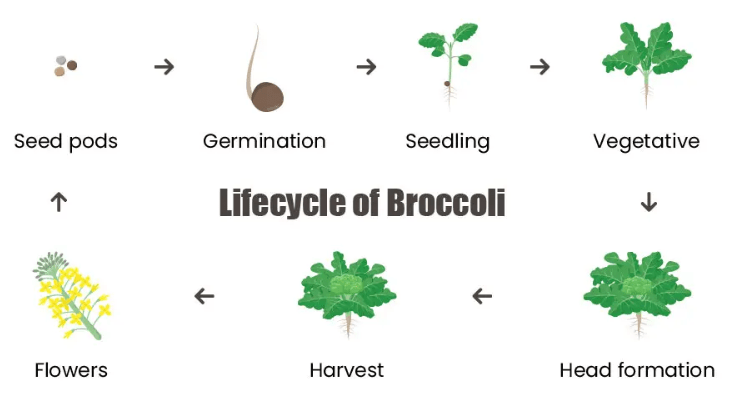
Explanation of when and why broccoli might flower.
Broccoli typically starts to flower when it experiences environmental stress, such as high temperatures or lack of water. This can cause the plant to shift from its vegetative growth stage to its reproductive stage, leading to the development of flower buds. Additionally, broccoli plants are also triggered to flower when they reach a certain level of maturity, usually around 60-70 days after transplantation. It’s important to monitor the plants closely during this time to prevent premature flowering, as this can result in smaller and lower-quality broccoli heads. To promote healthy growth and prevent premature flowering, it’s important to provide the plants with consistent watering, proper nutrition, and adequate space for growth. With proper care and attention, you can ensure a successful harvest of delicious and nutritious broccoli.
How the flowering stage fits into the overall growth cycle.
The flowering stage is an important part of the overall growth cycle of many plants, including broccoli. Understanding when and why broccoli might flower is key to successfully nurturing and harvesting the crop. Broccoli typically starts to flower when it experiences environmental stress, such as high temperatures or lack of water. This can cause the plant to shift from its vegetative growth stage to its reproductive stage, leading to the development of flower buds. Additionally, broccoli plants are also triggered to flower when they reach a certain level of maturity, usually around 60-70 days after transplantation. It’s important to monitor the plants closely during this time to prevent premature flowering, as this can result in smaller and lower-quality broccoli heads. To promote healthy growth and prevent premature flowering, it’s important to provide the plants with consistent watering, proper nutrition, and adequate space for growth. With proper care and attention, you can ensure a successful harvest of delicious and nutritious broccoli. Understanding the flowering stage and its role in the overall growth cycle of broccoli is essential for cultivating a thriving crop.
Causes of Broccoli Flowering
Environmental factors that can cause broccoli to flower (temperature, light, moisture).
Broccoli can start to flower when it experiences certain environmental stressors. High temperatures, lack of water, or an insufficient amount of light can all trigger the plant to shift from its vegetative growth stage to its reproductive stage, leading to the development of flower buds. Additionally, broccoli plants are also triggered to flower when they reach a certain level of maturity, typically around 60-70 days after transplantation. It’s important to closely monitor the plants during this time to prevent premature flowering, as this can result in smaller and lower-quality broccoli heads. To promote healthy growth and prevent premature flowering, it’s important to provide the plants with consistent watering, proper nutrition, and adequate space for growth. With proper care and attention, you can ensure a successful harvest of delicious and nutritious broccoli. Understanding the various environmental factors that can cause broccoli to flower is essential for cultivating a thriving crop.
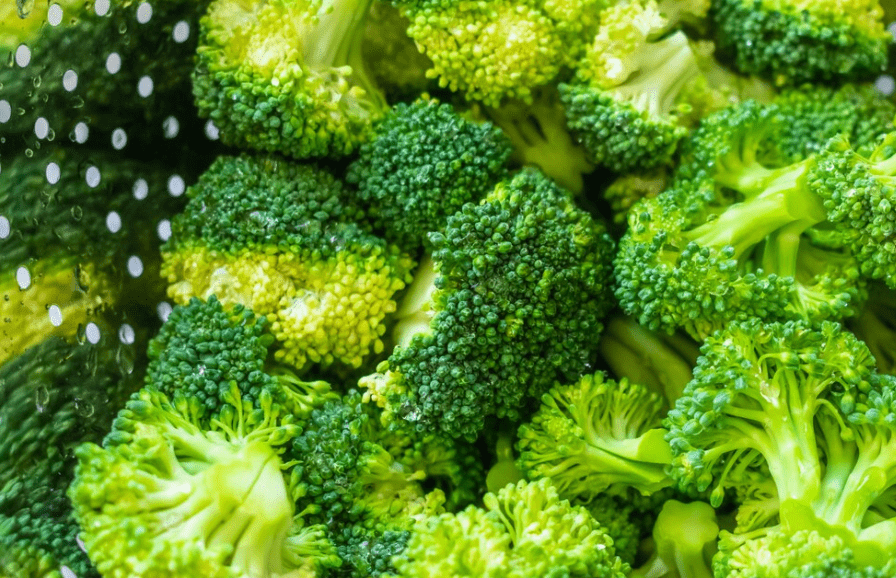
Genetic factors and how different varieties may flower differently.
Broccoli can start to flower when it experiences certain environmental stressors. High temperatures, lack of water, or an insufficient amount of light can all trigger the plant to shift from its vegetative growth stage to its reproductive stage, leading to the development of flower buds. Additionally, broccoli plants are also triggered to flower when they reach a certain level of maturity, typically around 60-70 days after transplantation. It’s important to closely monitor the plants during this time to prevent premature flowering, as this can result in smaller and lower-quality broccoli heads. To promote healthy growth and prevent premature flowering, it’s important to provide the plants with consistent watering, proper nutrition, and adequate space for growth. With proper care and attention, you can ensure a successful harvest of delicious and nutritious broccoli. Understanding the various environmental factors that can cause broccoli to flower is essential for cultivating a thriving crop. Genetic factors and how different varieties may flower differently is also important to consider when growing broccoli.
Nutrient deficiencies or excesses that might lead to flowering.
When it comes to growing crops like broccoli, it’s important to understand the various factors that can lead to premature flowering. Nutrient deficiencies or excesses can play a role in triggering the plant to shift from its vegetative growth stage to its reproductive stage. High temperatures, lack of water, or an insufficient amount of light can also cause the development of flower buds. Additionally, broccoli plants are naturally triggered to flower when they reach a certain level of maturity, typically around 60-70 days after transplantation. It’s crucial to closely monitor the plants during this time to prevent premature flowering, as this can result in smaller and lower-quality broccoli heads.
To promote healthy growth and prevent premature flowering, it’s important to provide the plants with consistent watering, proper nutrition, and adequate space for growth. By ensuring that the plants have access to the necessary nutrients and environmental conditions, you can help them thrive and produce high-quality broccoli heads. Additionally, understanding the genetic factors and how different varieties may flower differently is essential for cultivating a successful broccoli crop.
By being aware of the potential causes of premature flowering and taking proactive measures to address them, you can set the stage for a bountiful and delicious harvest of broccoli. With proper care and attention, you can ensure that your broccoli plants remain in their vegetative growth stage for as long as possible, allowing them to reach their full potential before transitioning to the reproductive stage.
Signs Your Broccoli is About to Flower
Early indicators that broccoli is preparing to flower.
Early indicators that broccoli is preparing to flower include the appearance of small, yellow flowers on the broccoli plant. This is a clear sign that the plant is transitioning from its vegetative growth stage to its reproductive stage. Additionally, you may notice that the central broccoli head begins to loosen and separate, which is another indication that flowering is imminent. It’s important to monitor the plants closely for these signs and take action to prevent premature flowering if necessary. By recognizing these early indicators and taking proactive measures, you can help ensure that your broccoli plants continue to produce high-quality heads for a longer period of time.
Visual signs and changes in the plant’s structure.
As your broccoli plants begin to mature, it’s important to keep an eye out for visual signs and changes in the plant’s structure that indicate they are about to flower. Early indicators that broccoli is preparing to flower include the appearance of small, yellow flowers on the broccoli plant. This is a clear sign that the plant is transitioning from its vegetative growth stage to its reproductive stage. Additionally, you may notice that the central broccoli head begins to loosen and separate, which is another indication that flowering is imminent.
It’s important to monitor the plants closely for these signs and take action to prevent premature flowering if necessary. By recognizing these early indicators and taking proactive measures, you can help ensure that your broccoli plants continue to produce high-quality heads for a longer period of time.
With proper care and attention, you can ensure that your broccoli plants remain in their vegetative growth stage for as long as possible, allowing them to reach their full potential before transitioning to the reproductive stage. This can be achieved by providing adequate water, sunlight, and nutrients to the plants, as well as keeping an eye out for any signs of stress or nutrient deficiencies.
By paying attention to the visual signs and changes in the structure of your broccoli plants, you can take proactive measures to support their vegetative growth and prolong the time before they transition to the reproductive stage. This will ultimately help you to maximize the yield and quality of your broccoli harvest.
Implications of Broccoli Flowering
Impact on taste, texture, and nutritional value.
When broccoli starts to flower, it can have an impact on its taste, texture, and nutritional value. The taste of broccoli may become more bitter once it starts to flower, as the plant shifts its energy from producing the edible head to the flowering process. Additionally, the texture of the broccoli may become tougher and less appealing. In terms of nutritional value, the nutrient content of the broccoli may start to decline as it diverts its resources to the flowering process. It’s important to harvest the broccoli before it starts to flower in order to ensure that you are getting the best taste, texture, and nutritional value from your crop.
How flowering affects the usability of broccoli in cooking.
When broccoli starts to flower, it can have an impact on its taste, texture, and nutritional value. The taste of broccoli may become more bitter once it starts to flower, as the plant shifts its energy from producing the edible head to the flowering process. Additionally, the texture of the broccoli may become tougher and less appealing. In terms of nutritional value, the nutrient content of the broccoli may start to decline as it diverts its resources to the flowering process. It’s important to harvest the broccoli before it starts to flower in order to ensure that you are getting the best taste, texture, and nutritional value from your crop. This will ultimately help you to maximize the yield and quality of your broccoli harvest and improve its usability in cooking.
Potential benefits and drawbacks of using flowered broccoli.
Flowering broccoli can have both benefits and drawbacks when it comes to usability in cooking. When broccoli starts to flower, it can have an impact on its taste, texture, and nutritional value. The taste of broccoli may become more bitter once it starts to flower, as the plant shifts its energy from producing the edible head to the flowering process. Additionally, the texture of the broccoli may become tougher and less appealing. In terms of nutritional value, the nutrient content of the broccoli may start to decline as it diverts its resources to the flowering process. It’s important to harvest the broccoli before it starts to flower in order to ensure that you are getting the best taste, texture, and nutritional value from your crop. This will ultimately help you to maximize the yield and quality of your broccoli harvest and improve its usability in cooking. While flowering broccoli may have some drawbacks, there are also potential benefits. Some people enjoy the taste of flowering broccoli, finding it to be more flavorful and slightly sweeter than regular broccoli. Additionally, the flowers themselves can be edible and add a unique and visually appealing touch to dishes. However, it’s important to consider the potential impact on taste, texture, and nutritional value when deciding whether to use flowering broccoli in cooking. Overall, the decision to use flowering broccoli in cooking will depend on personal preference and the specific dish being prepared.
Preventing Premature Broccoli Flowering
is crucial in order to ensure that you get the best taste, texture, and nutritional value from your crop. When broccoli starts to flower, it can become bitter and lose some of its nutritional value. To prevent premature flowering, it’s important to harvest the broccoli at the right time. Look for heads that are tight and firm, with buds that are still closed. Be sure to harvest the broccoli before the buds start to open and turn yellow, as this is a sign that flowering is about to occur. Additionally, be sure to provide the broccoli with adequate water, sunlight, and nutrients to prevent premature flowering. By taking these steps, you can maximize the yield and quality of your broccoli harvest and enjoy the best taste and texture from your crop.
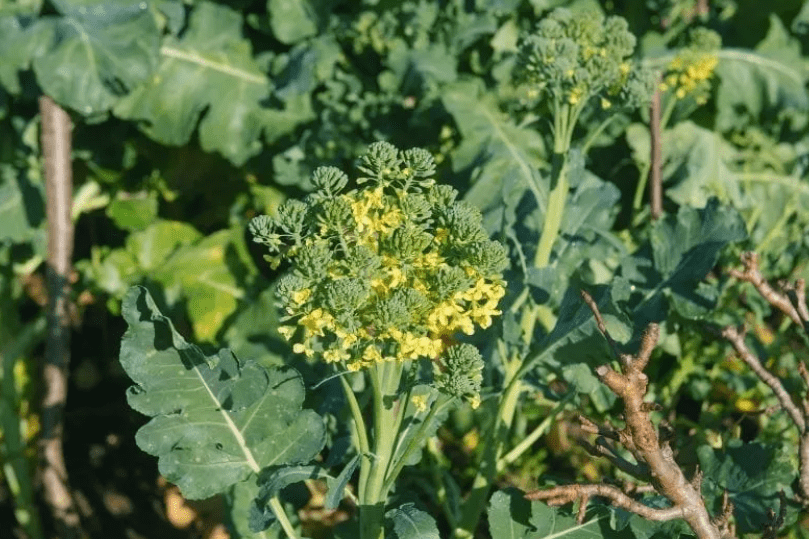
Harvesting Broccoli Before and After Flowering
Harvesting Broccoli Before and After Flowering is essential for getting the best taste and texture from your crop. Broccoli should be harvested before the buds start to open and turn yellow, as this is a sign that the plant is about to flower. Once the buds start to open, the broccoli will become bitter and lose some of its nutritional value. It’s important to keep an eye on the broccoli and harvest it at the right time. Look for heads that are tight and firm, with closed buds. This indicates that the broccoli is ready to be harvested. If you do notice any buds starting to open, be sure to harvest the broccoli immediately to prevent the plant from flowering. After harvesting, store the broccoli in the refrigerator to maintain its freshness. By taking these steps, you can ensure that you get the best taste, texture, and nutritional value from your broccoli harvest.
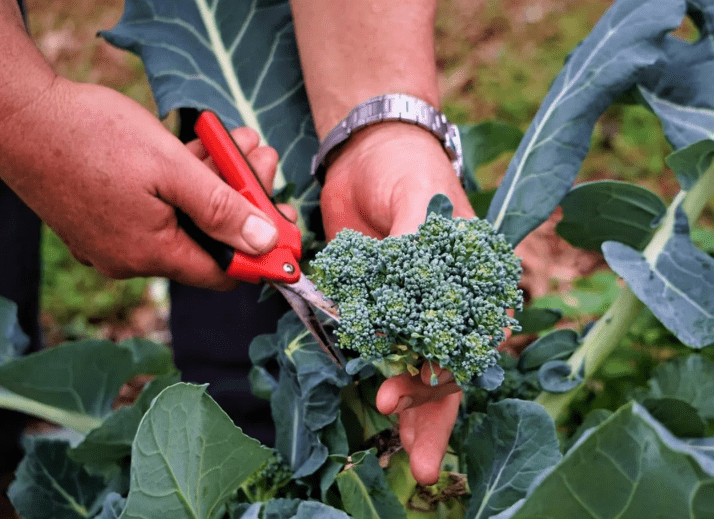
Culinary Uses for Flowered Broccoli
Flowered broccoli, also known as broccoli rabe or rapini, is a versatile and flavorful vegetable that can be used in a variety of culinary dishes. When the buds start to open, the broccoli can become bitter and lose some of its nutritional value, so it’s important to harvest it at the right time. Look for heads that are tight and firm, with closed buds, indicating that the broccoli is ready to be harvested. If you do notice any buds starting to open, be sure to harvest the broccoli immediately to prevent the plant from flowering. After harvesting, store the broccoli in the refrigerator to maintain its freshness. Once you have your fresh broccoli, you can use it in a number of delicious dishes. You can sauté it with garlic and olive oil, add it to pasta dishes, or even incorporate it into a stir-fry. Flowered broccoli can also be used in soups, salads, and as a side dish. Its slightly bitter flavor adds a unique and delicious twist to any meal. By following these tips, you can ensure that you get the best taste, texture, and nutritional value from your broccoli harvest. So next time you see that your broccoli has started to flower, don’t worry – there are plenty of culinary uses for flowered broccoli!
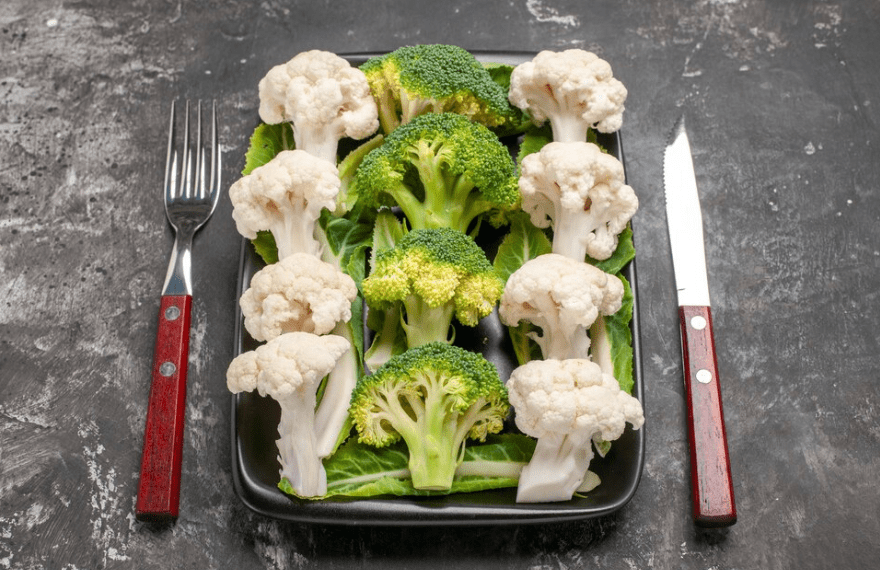
Gardening Tips for Managing Flowered Broccoli
After harvesting, it’s important to store the broccoli in the refrigerator to maintain its freshness. Once you have your fresh broccoli, you can use it in a number of delicious dishes. You can sauté it with garlic and olive oil, add it to pasta dishes, or even incorporate it into a stir-fry. Flowered broccoli can also be used in soups, salads, and as a side dish. Its slightly bitter flavor adds a unique and delicious twist to any meal. By following these tips, you can ensure that you get the best taste, texture, and nutritional value from your broccoli harvest. So next time you see that your broccoli has started to flower, don’t worry – there are plenty of culinary uses for flowered broccoli!
Broccoli Flowering in Different Climates
Broccoli can flower in different climates, so it’s important to manage your broccoli plants carefully to prevent premature flowering. To do this, you can start by planting your broccoli in a location that gets full sun and has well-draining soil. Make sure to water your plants consistently and provide them with the right nutrients to promote healthy growth. It’s also important to keep an eye on the temperature, as extreme heat or cold can cause your broccoli to flower early. If you notice your broccoli starting to flower, you can try cutting the flower heads off to encourage the plant to continue producing more florets. Additionally, harvesting your broccoli regularly can also help prevent flowering and encourage the plant to keep producing more edible florets. Overall, proper care and management of your broccoli plants can help prevent premature flowering and ensure a bountiful harvest of delicious, fresh broccoli.
Organic Approaches to Managing Broccoli Flowering
Organic approaches to managing broccoli flowered involve taking care of your broccoli plants to prevent premature flowering. It’s important to plant your broccoli in a location with full sun and well-draining soil, and to provide consistent watering and proper nutrients. Keep an eye on the temperature, as extreme heat or cold can cause early flowering. If you notice your broccoli starting to flower, you can try cutting off the flower heads to encourage more floret production. Regular harvesting can also help prevent flowering and promote more edible florets. Overall, proper care and management of your broccoli plants can help ensure a bountiful harvest of delicious, fresh broccoli.
In conclusion, broccoli flowered is a natural process that occurs when the broccoli plant starts to produce small yellow flowers. This typically happens when the weather gets warmer. While it may seem like a cause for concern, broccoli flowered is actually a sign that the plant is reaching the end of its life cycle and is preparing to produce seeds. For most gardeners, the goal is to harvest the broccoli before it starts to flower, as the flavor and texture of the florets may change once the plant starts to bolt. However, if you do end up with flowering broccoli, you can still harvest the florets and use them in cooking. Overall, understanding the process of broccoli flowered can help you better care for your plants and make the most of your broccoli harvest.
Frequently asked questions And Answer
The best way to cook broccoli flowers is to steam them for a few minutes until they are tender but still crisp. You can also roast them in the oven with some olive oil and seasonings for a delicious flavor.
Yes, the stems of broccoli flowers are edible and can be cooked and eaten just like the florets. They have a slightly different texture but are still delicious.
Broccoli flowers are ready to harvest when the florets are firm and tightly closed. Once they start to loosen and turn yellow, it’s best to harvest them before they start to flower.
Yes, broccoli flowers are very nutritious and are packed with vitamins, minerals, and antioxidants. They are a great source of vitamin C, vitamin K, and fiber.
Yes, you can eat broccoli flowers raw and they make a great addition to salads or vegetable platters. Just make sure to wash them thoroughly before consuming.
Broccoli flowers can be stored in the refrigerator in a plastic bag for up to a week. It’s best to store them unwashed and to only wash them right before using to prevent them from getting soggy.
Yes, you can freeze broccoli flowers for later use. Just blanch them in boiling water for a few minutes, then plunge them into ice water to stop the cooking process. Once they are cooled, you can store them in a freezer-safe bag or container for up to 6 months.
Broccoli flowers can be used in a variety of ways, such as in stir-fries, soups, pasta dishes, and even as a topping for pizza. They can also be pureed into a creamy broccoli soup or added to omelets for a nutritious boost.
